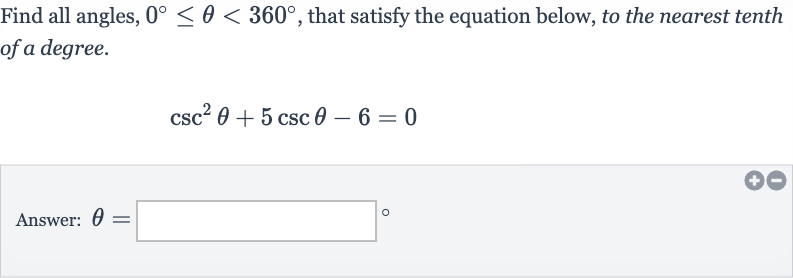Full solution
Q. Find all angles, , that satisfy the equation below, to the nearest tenth of a degree.Answer:
- Set as : Recognize that the given equation is a quadratic equation in terms of . Let's set to make it look more familiar.The equation becomes .
- Factor the quadratic: Factor the quadratic equation.
- Solve for x: Solve for x. or or
- Translate to : Translate the solutions for back into terms of . or
- Use sine definition: Solve for using the definition of cosecant, which is the reciprocal of sine.For , .For , .
- Find : Find the angles that correspond to . at .
- Find : Find the angles that correspond to .Since the range of the sine function is , and is within this range, we look for angles where the sine is negative. This occurs in the third and fourth quadrants.
- Find reference angle: Use the inverse sine function to find the reference angle for .
- Determine angles: Determine the angles in the third and fourth quadrants that have this reference angle.For the third quadrant: For the fourth quadrant:
- Combine solutions: Combine all the solutions.
More problems from Csc, sec, and cot of special angles
QuestionGet tutor help
QuestionGet tutor help
QuestionGet tutor help
QuestionGet tutor help
QuestionGet tutor help
QuestionGet tutor help
Question
. Find the value of in degrees.Write your answer in simplified, rationalized form. Do not round.____
Get tutor helpQuestionGet tutor help

